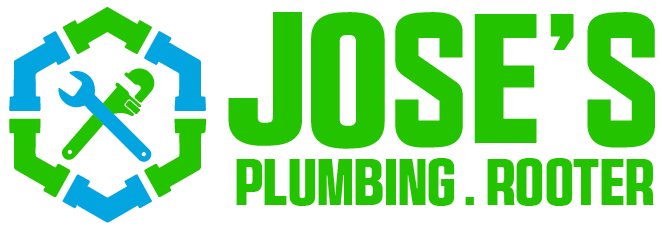
Pressure Regulator Failure: Causes, Symptoms, and Solutions Uncovered
Sometimes, the smallest components can have the biggest impact. The pressure regulator, for instance, keeps everything running smoothly, from your shower to industrial processes. When this essential part fails, disruptions follow. Understanding pressure regulator failure, its causes, symptoms, and solutions is essential for maintaining efficiency and safety.
A sudden change in water pressure may indicate a deeper issue. At its core, the problem might be a faulty regulator. Studies show that many of these failures are preventable with regular maintenance. But what causes them? And how can you detect problems early? This guide uncovers the details and offers solutions to prevent major issues. If you ever face persistent pressure problems, contact a professional to assess the situation.
Understanding Pressure Regulator Failure
Pressure regulators are mechanical devices that maintain consistent downstream pressure despite supply fluctuations. When a pressure regulator failure occurs, the device loses control, creating unstable output and unsafe conditions. Whether in residential plumbing or industrial systems, failure can result in overpressure or underpressure—both potentially damaging.
Inside most regulators, a spring-loaded diaphragm adjusts the flow of fluid or gas. Over time, wear, misalignment, or seal deterioration lead to loss of performance. Exposure to contaminants, high temperatures, or corrosive materials accelerates this process. Understanding how these systems work helps homeowners and technicians identify problems early and ensure stable operation.
Common Causes of Pressure Regulator Failure
Contamination: Dirt and debris prevent proper sealing, leading to leaks and erratic control.
Corrosion: Moisture and chemicals weaken metal parts, causing premature wear.
Improper installation: Incorrect sizing or reversed installation creates unnecessary strain and pressure imbalance.
Each of these issues contributes to pressure regulator failure. Proper selection, installation, and filtration minimize risks and prolong regulator life.
Symptoms of a Failing Pressure Regulator
Irregular pressure readings or sudden fluctuations despite constant upstream conditions.
Unusual noises like hissing or banging from the regulator area.
Reduced water flow or pressure drops across multiple outlets.
These signs often signal that the internal mechanism or seals are wearing out. Addressing these issues early prevents greater damage and costly repairs.
Importance of Timely Detection and Maintenance
Early detection of pressure regulator failure safeguards both equipment and safety. Ignoring it can lead to burst pipes, inefficient performance, or complete system breakdown. Regular inspections and preventive maintenance protect equipment and save on long-term costs. Replacing worn parts before they fail ensures continuous and safe operation.
Impact of Pressure Regulator Failure on Different Systems
In residential plumbing, pressure regulator failure causes inconsistent water flow and damages appliances like dishwashers and water heaters. It can even lead to leaks and structural water damage. For professional repair and inspection services, explore residential plumbing repair installations.
Industrial systems are even more vulnerable. Inaccurate pressure control can disrupt tools, automation, and combustion systems. The result is often production loss and safety hazards, especially when flammable gases are involved.
Testing and Inspection Techniques for Pressure Regulators
Visual inspection helps identify leaks, corrosion, or physical damage. Functional tests measure inlet and outlet pressures to ensure the regulator maintains the correct setpoint. Leak detection with soap solution or electronic tools confirms seal integrity. These steps collectively provide a full understanding of regulator condition and performance.
DIY Solutions for Simple Pressure Regulator Issues
Basic regulator issues can often be handled safely at home. Start by isolating the device and relieving pressure. Remove the cover, clean the diaphragm and spring, and check for debris. Many problems resolve with cleaning and seal replacement. For more extensive plumbing services, visit repiping services for professional assistance.
Professional Solutions for Complex Pressure Regulator Problems
When internal damage is significant, professional repair is essential. Certified technicians perform calibration, ultrasonic cleaning, and diagnostic inspections. In severe cases, full replacement is more practical. Professionals ensure compliance with safety standards and restore regulator accuracy. For expert assistance, explore copper or pex repiping options for reliable performance and system longevity.
Preventive Maintenance Tips for Extending Pressure Regulator Lifespan
Inspect regulators regularly for leaks, corrosion, or pressure fluctuations.
Install upstream filters to trap contaminants before they reach the regulator.
Use corrosion-resistant materials and ensure correct installation orientation.
Following these steps reduces the risk of pressure regulator failure and ensures stable system performance over time.
FAQs About Pressure Regulator Failure
What are the most common signs of pressure regulator failure?
Fluctuating pressure, leaks, and unusual noises often indicate pressure regulator failure requiring inspection or replacement.
How can I prevent pressure regulator failure?
Regular maintenance, proper installation, and using clean, filtered fluids or gases help prevent premature regulator breakdown.
Can I repair a pressure regulator on my own?
Minor issues can be addressed with cleaning and seal replacement, but complex failures need professional attention for safety.
How often should pressure regulators be inspected?
Routine inspections every six months, or as recommended by the manufacturer, help detect issues before major damage occurs.
Is pressure regulator failure dangerous?
Yes, because overpressure can damage pipes or cause system hazards. Always act promptly when signs of malfunction appear.
Ensuring Operational Efficiency and Safety
Pressure regulator failure may appear minor but can have major consequences. Understanding the causes and applying reliable maintenance methods prevent costly disruptions. For immediate assistance, contact a professional plumbing team. With regular care and timely intervention, your systems will operate efficiently and safely for years to come.
Contact Us
Santa Clara, CA
24/7 Availability
We Accept Cash, Checks, Zelle, and Credit Cards




